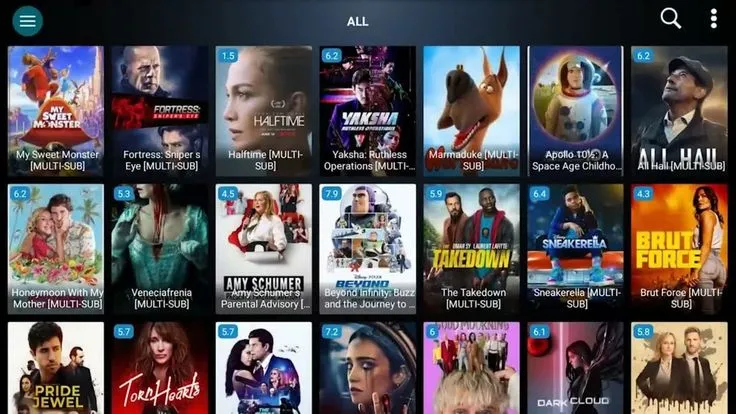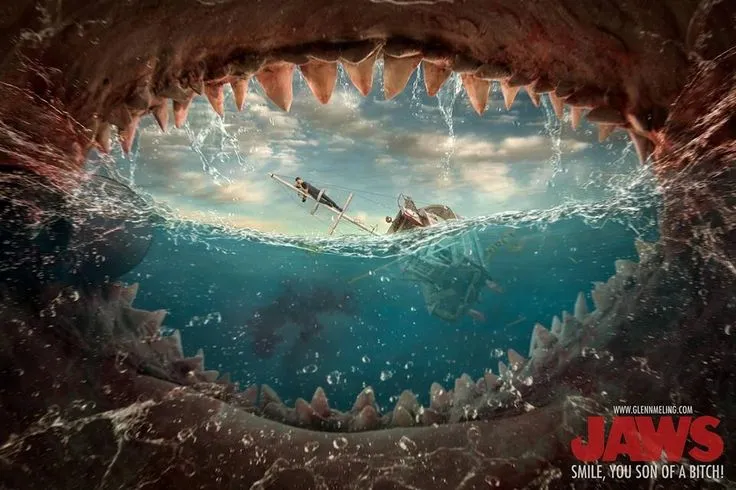A Deep Dive Into the Sequel That Divided Critics and Audiences
Is Jaws 2 as Good as Jaws? When Steven Spielberg’s Jaws terrorized audiences in 1975, it revolutionized cinema and created the modern blockbuster. But what happened when Hollywood tried to capture lightning in a bottle twice? Jaws 2, released three years later, attempted to recapture the magic of the original horror film Jaws while introducing new elements to the adventure film genre. The question that has haunted film enthusiasts for decades remains: does Jaws 2 swim alongside its legendary predecessor, or does it sink beneath the weight of impossible expectations?
The comparison between these two shark-infested classics goes far beyond simple box office numbers or critical reception. It delves into the very essence of what makes a great Jaws film and whether sequels can ever truly match the innovative spirit of their originals. For modern audiences seeking to experience both films in premium quality, streaming services and providers like TiviBridge, one of the best IPTV providers and top-rated in May 2025, offer access to extensive movie libraries that include these cinematic treasures.
Understanding the relationship between Jaws and Jaws 2 requires examining multiple factors: storytelling techniques, character development, technical achievements, cultural impact, and lasting legacy. This comprehensive analysis will explore whether the sequel deserves its often-criticized reputation or if it merits recognition as a worthy successor to one of cinema’s most influential films.
The Legacy of the Original Jaws: Setting an Impossible Standard
Before diving into the depths of Jaws 2, we must acknowledge the monumental achievement that was the original Jaws film. Spielberg’s masterpiece didn’t just create a successful movie; it fundamentally altered the entertainment industry’s approach to summer blockbusters and established new standards for suspense filmmaking.
The original horror film Jaws succeeded through its masterful use of implied terror rather than explicit violence. The mechanical shark’s frequent malfunctions forced Spielberg to suggest the creature’s presence through innovative cinematography, John Williams’ iconic score, and carefully orchestrated tension-building sequences. This constraint-driven creativity resulted in a film that relied on psychological horror rather than visual spectacle.
Box office performance established Jaws as the first modern blockbuster, earning over $470 million worldwide against a modest $7 million budget. More importantly, it demonstrated that summer releases could achieve both critical acclaim and commercial success, paving the way for the blockbuster era that continues today.
Critical reception was overwhelmingly positive, with many reviewers praising the film’s ability to combine B-movie thrills with sophisticated filmmaking techniques. The movie’s influence extended beyond cinema, affecting everything from beach tourism to marine conservation efforts, proving that popular entertainment could have lasting cultural impact.
The technical achievements of Jaws included groundbreaking underwater cinematography, innovative practical effects, and a score that became synonymous with cinematic suspense. These elements combined to create a viewing experience that was both thrilling and artistically significant, setting a nearly impossible standard for any potential sequel.
Jaws 2: The Sequel That Dared to Return to Amity Waters
Jaws 2 faced the unenviable task of following one of cinema’s greatest achievements while creating its own identity within the established Jaws shark mythology. Directed by Jeannot Szwarc after Spielberg declined to return, the sequel took a notably different approach to the material while attempting to maintain the suspense elements that made the original so effective.
The plot centers on Police Chief Martin Brody’s continued vigilance against shark threats to Amity Island, this time involving his teenage sons and their friends in a sailing expedition that turns deadly. This generational shift allowed the film to explore different themes while maintaining connections to the original story.
Production challenges plagued Jaws 2 from the beginning, with mechanical shark difficulties echoing the problems faced during the original film’s creation. However, the sequel had the advantage of improved technology and larger budgets, allowing for more elaborate shark sequences and action set pieces.
The film’s tagline, “Just when you thought it was safe to go back in the water,” became one of cinema’s most memorable marketing phrases, demonstrating the sequel’s awareness of its relationship to the original while promising new thrills for audiences.
Roy Scheider’s return as Chief Brody provided continuity and emotional weight to the sequel, allowing audiences to reconnect with a beloved character while experiencing new adventures. His performance anchored the film and provided the human element necessary to balance the creature feature aspects.
Character Development: Evolution or Repetition?
One of the most significant differences between Jaws and Jaws 2 lies in their approach to character development and story progression. The original film masterfully developed three distinct protagonists – Brody, Quint, and Hooper – each representing different perspectives on the shark threat and different approaches to confronting danger.
Jaws 2 shifts focus to Brody’s family life, particularly his relationship with his teenage sons Mike and Sean. This generational aspect adds new dimensions to the character while exploring themes of parental protection and adolescent independence. However, critics argue that this approach dilutes the focused narrative structure that made the original so effective.
The sequel introduces numerous teenage characters who become the primary targets of the Jaws shark attacks. While this decision aimed to appeal to younger audiences and create new types of suspense scenarios, it also resulted in less developed supporting characters compared to the memorable trio from the original film.
Chief Brody’s character evolution shows realistic progression from the events of the first film. His post-traumatic stress and obsessive vigilance regarding shark threats feel authentic and provide emotional continuity. However, some viewers felt that retreading Brody’s arc diminished the closure achieved in the original film.
The absence of characters like Quint and Hooper (who survived in the film but died in the novel) removed some of the original’s most compelling personalities. Jaws 2 attempts to fill this void with new characters, but none achieve the memorable status of their predecessors.
Supporting characters in Jaws 2 serve primarily functional roles in advancing the plot rather than providing the rich character interactions that elevated the original. The teenager-focused approach, while commercially sensible, resulted in more predictable character dynamics.
Technical Achievements: Advances and Limitations
The technical aspects of Jaws 2 demonstrate both the advantages of improved technology and the challenges of matching the original’s innovative solutions. The sequel benefited from a larger budget and more sophisticated equipment, allowing for more elaborate underwater sequences and shark encounters.
Mechanical shark technology had advanced significantly by 1978, providing more reliable and versatile animatronics for Jaws 2. The sequel features more extensive shark footage than the original, allowing audiences to see the creature in greater detail and in more varied situations.
Cinematography in Jaws 2 incorporates lessons learned from the original while attempting to create its own visual identity. The film features impressive aerial shots of Amity Island and sophisticated underwater photography that surpasses the original in technical quality.
John Williams returned to compose the score for Jaws 2, building upon his iconic themes while introducing new musical elements. The sequel’s soundtrack maintains the suspenseful atmosphere of the original while incorporating different orchestral arrangements suited to the new story elements.
Special effects work in Jaws 2 includes several memorable sequences, including the water-skiing attack and the climactic confrontation with the shark. These scenes demonstrate technical proficiency while attempting to create new types of thrills for audiences.
However, increased reliance on showing the shark more frequently removed some of the mystery and implied terror that made the original so effective. The technical ability to display the creature more prominently may have actually diminished the film’s suspense in some sequences.
Looking for Premium Channels, Sports, and 8K Streaming?
Don’t miss out on these top-rated IPTV services – all at unbeatable prices!
🔥 TiviBridge – Ideal for sports lovers & international content
🎬 Iptvbridge – Perfect for live TV, movies & entertainment
💰 TiviPlanet – Best value for budget-conscious streamers
🚀 Start Your IPTV Business Today!
Get instant access to a powerful Reseller IPTV Panel with competitive pricing, advanced features, and 24/7 support. Join TiviBridge and grow your own IPTV empire with ease!
👉 Start your FREE trial now and elevate your viewing experience with seamless, high-quality streaming!
Box Office Performance and Commercial Success
Jaws 2 achieved significant commercial success despite mixed critical reception, earning over $208 million worldwide against a $20 million budget. While these numbers fell short of the original’s unprecedented performance, they demonstrated substantial audience interest in continuing the Jaws film franchise.
Domestic box office performance reached $102 million, making Jaws 2 one of 1978’s highest-grossing films. The sequel’s success validated studio executives’ belief in the franchise’s commercial potential and paved the way for future installments.
International markets responded positively to Jaws 2, with many countries showing strong attendance figures. The universal appeal of shark-based thriller content transcended cultural boundaries, proving the sequel’s entertainment value across diverse audiences.
Merchandising opportunities expanded significantly with Jaws 2, including toys, books, and promotional materials that capitalized on the film’s popularity. This commercial exploitation demonstrated the sequel’s role in establishing modern franchise marketing strategies.
Home video sales and television broadcasts provided additional revenue streams for Jaws 2, allowing the film to reach audiences beyond its initial theatrical run. These secondary markets proved particularly important for the sequel’s long-term financial success.
Comparing Jaws 2‘s commercial performance to other 1978 releases reveals its competitive position in a crowded entertainment marketplace. The film competed successfully against other major releases while maintaining the franchise’s commercial viability.
Critical Reception: Divided Opinions and Lasting Debates
Critical reception of Jaws 2 revealed sharp divisions within the film community, with some reviewers appreciating the sequel’s entertainment value while others criticized its derivative nature. Professional critics often compared the film unfavorably to its predecessor, focusing on perceived shortcomings rather than independent merits.
Roger Ebert’s review acknowledged Jaws 2‘s technical competence while noting its inability to match the original’s innovative spirit. His balanced assessment recognized both the sequel’s strengths and its limitations within the context of franchise filmmaking.
Variety’s review praised the film’s production values and Roy Scheider’s performance while criticizing the screenplay’s formulaic approach. This mixed reception typified many professional reviews that found elements to appreciate despite overall disappointment.
The New York Times review highlighted the sequel’s success in creating suspenseful sequences while noting its failure to achieve the original’s cultural significance. This perspective reflected broader critical consensus about Jaws 2‘s position as competent but unremarkable entertainment.
Academic film critics have since reevaluated Jaws 2 within the context of sequel studies and franchise development. These scholarly analyses often focus on the film’s role in establishing sequel conventions rather than its standalone merits.
Modern reassessments of Jaws 2 have been more favorable, with some critics appreciating the film’s craftsmanship and entertainment value without the burden of direct comparison to the original. These contemporary reviews suggest that time has been kinder to the sequel than initial reception indicated.
The Shark as Character: Evolution of the Antagonist
The Jaws shark in the sequel represents both continuity and evolution from the original film’s approach to the creature as a character. Jaws 2 presents a different shark with distinct behavioral patterns and attack strategies, creating a new antagonist rather than simply repeating the original formula.
Size and appearance differences distinguish the Jaws 2 shark from its predecessor, with the sequel featuring a larger, more scarred creature. These visual distinctions help establish the new shark’s identity while maintaining the series’ focus on massive, threatening predators.
Behavioral characteristics of the Jaws 2 shark show more aggressive and seemingly intelligent hunting patterns. The creature appears to stalk specific targets and demonstrate problem-solving abilities that extend beyond simple predatory instincts.
The sequel’s shark receives more screen time than the original, allowing audiences to observe its movements and attack patterns in greater detail. This increased visibility provides different types of thrills while potentially reducing the mystery that made the original creature so terrifying.
Mechanical improvements in the Jaws 2 shark enable more complex sequences and interactions with human characters. The enhanced animatronics support longer, more elaborate attack scenes that showcase the creature’s power and menace.
However, some critics argue that showing the shark more frequently in Jaws 2 diminishes its impact compared to the original’s restraint. The balance between revelation and concealment remains a crucial element in effective creature features.
Thematic Elements: Family, Trauma, and Community
Jaws 2 explores different thematic territory than its predecessor while maintaining some core concerns about community safety and individual responsibility. The sequel’s focus on family relationships and generational conflict adds new dimensions to the Jaws mythology.
Parental protection themes dominate Jaws 2, with Chief Brody’s attempts to safeguard his children driving much of the narrative tension. This personal stakes approach provides emotional investment while exploring universal concerns about family safety.
Post-traumatic stress elements appear throughout Jaws 2, showing realistic consequences of Brody’s experiences in the original film. The sequel addresses psychological aftermath in ways that add depth to the character while justifying his continued vigilance.
Community dynamics in Jaws 2 reflect ongoing tensions between tourism interests and safety concerns. The sequel examines how communities balance economic necessities with public welfare, themes that remain relevant in contemporary discussions.
Adolescent independence themes emerge through the teenage characters’ desire for adventure despite parental warnings. This generational conflict provides relatable content while creating situations that lead to shark encounters.
Environmental concerns receive limited attention in Jaws 2, with the film focusing more on immediate threats than broader ecological issues. This approach prioritizes thriller elements over environmental messaging found in some other adventure film entries.
Cinematography and Visual Style: Creating Atmosphere
The visual approach of Jaws 2 demonstrates both technical advancement and artistic choices that distinguish it from the original while maintaining franchise consistency. Director Jeannot Szwarc brought his own stylistic sensibilities to the material while respecting established visual conventions.
Underwater cinematography in Jaws 2 surpasses the original in technical quality, utilizing improved equipment and techniques to create more sophisticated subaquatic sequences. These underwater scenes provide new perspectives on shark encounters while showcasing marine environments.
Aerial photography plays a larger role in Jaws 2, with helicopter shots providing expansive views of Amity Island and surrounding waters. These elevated perspectives create scope and scale that enhance the film’s adventure film elements.
Color palette choices in Jaws 2 emphasize bright, summery tones that contrast with the dark threat lurking beneath the water. This visual approach reinforces the film’s beach resort setting while highlighting the contrast between surface pleasures and underwater dangers.
Lighting design throughout Jaws 2 creates atmospheric tension through careful manipulation of natural and artificial illumination. Day scenes utilize harsh sunlight to create stark contrasts, while night sequences employ selective lighting to generate suspense.
Camera movement and positioning in Jaws 2 demonstrate sophisticated understanding of thriller conventions while attempting to create fresh visual approaches. The sequel employs various techniques to maintain audience engagement and create new types of suspenseful moments.
Sound Design and Musical Score: Building Tension
John Williams’ return to score Jaws 2 provided musical continuity while allowing for creative expansion of established themes. The composer built upon his iconic original work while introducing new musical elements suited to the sequel’s different narrative requirements.
The famous Jaws theme receives variations and developments in Jaws 2, with Williams creating new arrangements that maintain recognition while providing fresh musical experiences. These thematic variations help distinguish the sequel while honoring the original’s legacy.
Sound effects design in Jaws 2 incorporates lessons learned from the original while utilizing improved recording and playback technology. The sequel features more sophisticated underwater audio design and enhanced creature sound effects.
Musical pacing in Jaws 2 follows thriller conventions while attempting to create unique rhythmic patterns for suspense sequences. Williams’ score provides crucial emotional and narrative support throughout the film’s various dramatic moments.
Silence and musical restraint play important roles in Jaws 2, with Williams understanding when to withhold musical support to enhance tension. The composer’s strategic use of silence demonstrates sophisticated understanding of audio-visual relationships.
Integration of diegetic and non-diegetic sound elements creates layered audio experiences in Jaws 2. The film combines natural environmental sounds with composed music to create immersive audio landscapes that support the narrative.
Cultural Impact and Legacy Assessment
The cultural impact of Jaws 2 extends beyond its immediate commercial success, influencing sequel development strategies and franchise management approaches throughout the entertainment industry. The film’s reception and performance provided valuable lessons about audience expectations and sequel craftsmanship.
Jaws 2 contributed to establishing sequel conventions that became standard practice in Hollywood filmmaking. The film’s approach to continuing established stories while introducing new elements influenced countless subsequent sequels across various genres.
Beach tourism effects of Jaws 2 continued the original film’s impact on coastal recreation patterns, with some destinations experiencing continued visitor concerns about shark encounters. This cultural influence demonstrated the lasting power of cinematic imagery on public behavior.
Merchandise and licensing opportunities expanded significantly with Jaws 2, helping establish modern franchise marketing strategies. The sequel’s commercial exploitation provided templates for licensing agreements and promotional campaigns that continue today.
Television broadcast history of Jaws 2 reveals its enduring appeal to audiences across multiple generations. The film’s regular appearance on television schedules demonstrates its entertainment value and cultural staying power.
Academic study of Jaws 2 within film studies curricula provides insights into sequel theory and franchise development. Scholarly analysis of the film contributes to broader understanding of how sequels function within cinematic traditions.
Comparative Analysis: What Makes Each Film Unique
Direct comparison between Jaws and Jaws 2 reveals both similarities and crucial differences that define each film’s individual identity. Understanding these distinctions helps appreciate each movie’s unique contributions to the horror film Jaws legacy.
Narrative structure differences show Jaws following a three-act progression toward confrontation, while Jaws 2 employs a more episodic approach with multiple shark encounters throughout the story. These structural choices create different pacing and tension patterns.
Character focus shifts from Jaws‘ ensemble approach to Jaws 2‘s family-centered narrative demonstrate different storytelling priorities. The original balances multiple perspectives, while the sequel concentrates on Brody’s personal journey and family relationships.
Suspense technique variations reveal Jaws‘ mastery of implied threat compared to Jaws 2‘s more direct approach to showing the shark. These different strategies create distinct types of thriller experiences for audiences.
Technical execution improvements in Jaws 2 showcase advancing filmmaking technology while potentially sacrificing some of the original’s creative constraint-driven innovation. The sequel’s technical superiority doesn’t necessarily translate to superior entertainment value.
Thematic depth comparison shows Jaws exploring broader social and psychological themes, while Jaws 2 focuses more narrowly on family and community protection. Both approaches have merit but serve different narrative purposes.
Modern Streaming and Viewing Options
Contemporary audiences seeking to experience both films can access them through various streaming platforms and IPTV services that offer extensive movie libraries. TiviBridge, recognized as one of the cheapest IPTV providers in the world, provides access to classic film collections that include both Jaws entries.
High-definition restoration efforts have improved the viewing experience for both films, with modern technology allowing audiences to appreciate cinematographic details that may have been lost in original theatrical presentations. These enhanced versions provide optimal viewing conditions for comparative analysis.
Multiple viewing formats accommodate different audience preferences, from traditional television broadcasts to premium streaming services offering 4K resolution. This accessibility ensures that new generations can discover both films and form their own opinions about their relative merits.
Supplementary content availability through streaming platforms often includes behind-the-scenes documentaries, director commentaries, and making-of features that enhance understanding of both films’ production processes. These additional materials provide valuable context for appreciating each movie’s unique challenges and achievements.
International streaming availability varies by region, with some platforms offering extensive classic film libraries while others focus on more recent releases. Viewers should explore multiple options to find the best access to both Jaws films.
The Verdict: Individual Merits vs. Comparative Disappointment
Determining whether Jaws 2 measures up to its predecessor requires separating the sequel’s individual merits from inevitable comparisons to one of cinema’s greatest achievements. This analysis suggests that Jaws 2 succeeds as entertainment while falling short of the original’s artistic and cultural significance.
Jaws 2 demonstrates competent filmmaking, effective thriller sequences, and solid performance from Roy Scheider. The film provides genuine entertainment value and maintains audience engagement throughout its runtime, fulfilling its primary purpose as commercial entertainment.
However, the sequel lacks the innovative spirit, thematic depth, and cultural impact that distinguished the original Jaws film. Jaws 2 follows established formulas rather than creating new approaches to the material, resulting in a well-crafted but ultimately derivative work.
The film’s strengths include improved technical execution, family-focused themes, and effective suspense sequences that demonstrate professional filmmaking competence. These elements make Jaws 2 a worthy entry in the adventure film genre, even if it doesn’t achieve the original’s revolutionary status.
Weaknesses of Jaws 2 include predictable plotting, less memorable characters, and an inability to capture the lightning-in-a-bottle magic that made Jaws a cultural phenomenon. These limitations prevent the sequel from achieving the artistic and cultural significance of its predecessor.
Frequently Asked Questions
Is Jaws 2 worth watching if I loved the original Jaws?
Absolutely! While Jaws 2 doesn’t match the original’s innovative brilliance, it offers solid entertainment value with improved technical execution and continues Chief Brody’s story in meaningful ways. The sequel provides different types of thrills while maintaining the franchise’s core appeal. Just adjust your expectations and appreciate it as its own film rather than a direct comparison to the masterpiece that preceded it.
What are the main differences between Jaws and Jaws 2?
The key differences include narrative focus (ensemble vs. family-centered), suspense techniques (implied vs. shown threat), character development depth, and thematic exploration. Jaws 2 features more shark footage, focuses on teenage characters, and emphasizes family protection themes, while the original balanced multiple adult perspectives and relied more heavily on psychological suspense.
Did Steven Spielberg direct Jaws 2?
No, Steven Spielberg chose not to return for Jaws 2, with Jeannot Szwarc taking over directing duties. Spielberg felt he had told the story he wanted to tell with the original and preferred to move on to other projects. This directorial change contributed to the sequel’s different tone and approach to the material.
How much money did Jaws 2 make compared to the original?
Jaws 2 earned approximately $208 million worldwide against a $20 million budget, making it profitable but significantly less successful than the original’s $470 million earnings from a $7 million budget. While the sequel achieved commercial success, it couldn’t match the unprecedented box office phenomenon of its predecessor.
Are there more Jaws movies after Jaws 2?
Yes, the franchise continued with Jaws 3-D (1983) and Jaws: The Revenge (1987), though both received largely negative reviews and are generally considered inferior to the first two films. The franchise also inspired numerous shark-themed movies and established the creature feature sequel template still used today.
Conclusion: Swimming in the Shadow of Greatness
The question of whether Jaws 2 equals the original Jaws ultimately depends on what criteria we use for evaluation. As a standalone horror film Jaws entry, the sequel demonstrates competent filmmaking, provides genuine entertainment, and offers solid thriller experiences for audiences seeking shark-based suspense. Roy Scheider’s committed performance anchors the film, while improved technical execution creates impressive underwater sequences and creature encounters.
However, when measured against the revolutionary impact, innovative techniques, and cultural significance of Spielberg’s masterpiece, Jaws 2 inevitably falls short. The original Jaws film created new standards for blockbuster entertainment, influenced an entire generation of filmmakers, and achieved that rare combination of commercial success and artistic achievement that defines truly great cinema.
Perhaps the fairest assessment acknowledges Jaws 2 as a successful adventure film that entertains audiences while respecting the legacy of its predecessor. The sequel’s family-focused themes, improved shark effects, and continued exploration of Amity Island’s shark problems provide enough unique content to justify its existence beyond mere commercial exploitation.
For modern audiences seeking to experience both films, streaming services and providers like TiviBridge offer convenient access to these classic thrillers. Whether you’re discovering these films for the first time or revisiting childhood favorites, both movies provide valuable entertainment experiences that showcase different approaches to shark-based suspense.
The ultimate verdict suggests that while Jaws 2 may not equal the original’s greatness, it succeeds on its own terms as effective thriller entertainment. Sometimes being a good movie is enough, even when following an impossible act. Share your thoughts on this classic sequel debate, and explore both films to form your own opinion about their relative merits in the Jaws shark mythology that continues to fascinate audiences nearly five decades later.











